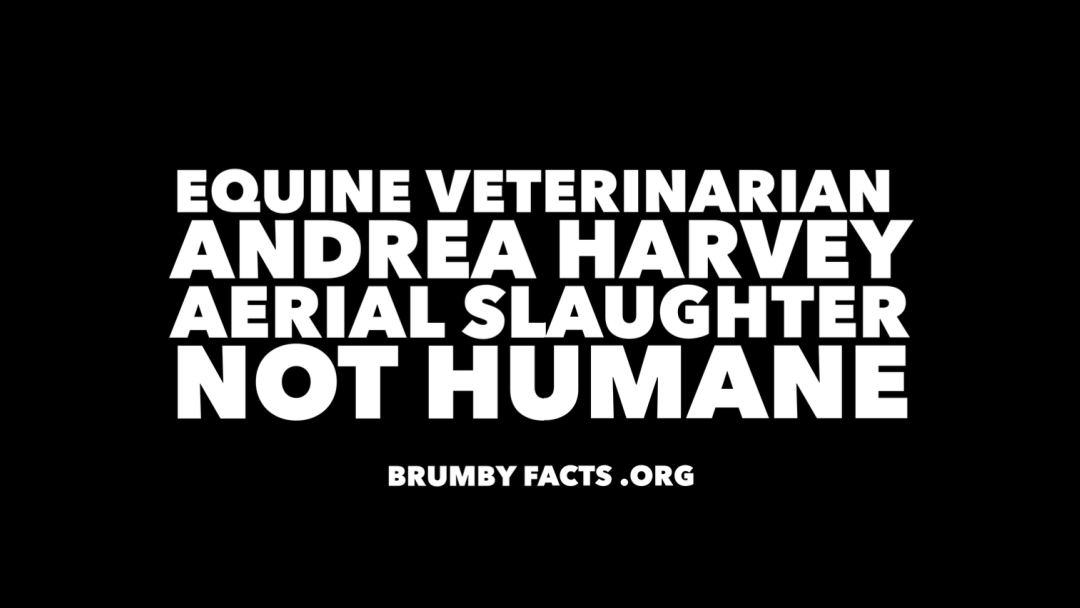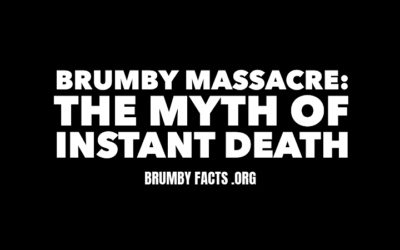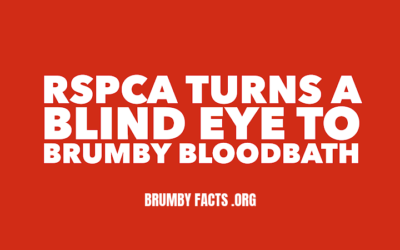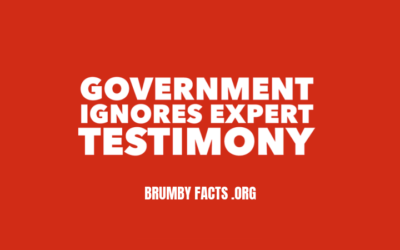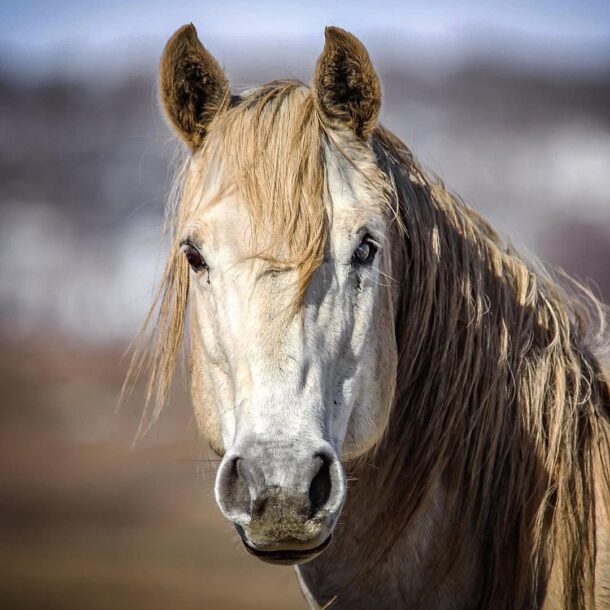Rest assured, there are no graphic images on this page. We always warn visitors about potentially disturbing content, so you can browse safely without any surprises.
DR. ANDREA HARVEY DEATHS ARE NOT HUMANE

While we often disagree with Ray Hadley, we find common ground on the issue of horse culling in Kosciuszko National Park (KNP).
TESTIMONY TRANSCRIPT: ANDREA HARVEY
REPORT ON PROCEEDINGS BEFORE
ANIMAL WELFARE COMMITTEE
PROPOSED AERIAL SHOOTING OF BRUMBIES IN KOSCIUSZKO NATIONAL PARK
EXCERPTS (UNCORRECTED)
27 MARCH 2024
Associate Professor ANDREA HARVEY, Associate Professor, University of Sydney, and Chancellors Research Fellow, University of Technology Sydney, sworn and examined.
The CHAIR: I welcome our first witness and thank you for giving your time to give evidence today. Do you have an opening statement that you’d like to give?
ANDREA HARVEY: I do. I have post-graduate veterinary qualifications in animal welfare science, including a PhD in assessing wild horse welfare.
I’ve been working with wild horses for 11 years across a range of areas, so in addition to my PhD that involved two years of field work across different sites in Kosciuszko National Park, I’ve also carried out pro bono veterinary work for a range of brumby re-homers over the last 10 years, including gelding over 100 stallions for rehoming.
I’ve also conducted immunocontraceptive trials in captive brumby populations and have personally homed and trained brumbies.
I’ve published and lectured widely on the subject of wild horse welfare. I was also the veterinarian and deputy chair of the Scientific Advisory Panel that ran for two years from 2019 to 2021 for the development of the 2021 wild horse management plan.
I’ve subsequently been engaged in consultancy work for National Parks and Wildlife Service, providing advice and undertaking animal welfare audits for a range of the management methods that are used or have been trialled.
I was not, however, involved in the animal welfare audit for aerial shooting.
I am here today not to give my personal opinion on aerial shooting or other aspects of wild horse management but as an expert in animal welfare, and specifically in wild horse welfare, to provide factual information.
I consider my role is to provide high-level expertise on the welfare impacts associated with aerial shooting and other management methods, using my knowledge of scientific evidence based both on literature and my firsthand experience.
In the last two weeks I initiated a poll of veterinarians, conducted through the Centre for Veterinary Education of the University of Sydney, and to date 81 per cent of 36 respondents so far do not consider any form of aerial shooting with chest shots to constitute a humane death, with those that do consider aerial shooting to be humane only accepting a less than one minute chase time.
The Scientific Advisory Panel recommended following the International Consensus Principles for Ethical Wildlife Control, published in 2017.
These principles include that management methods should cause the least harms to animal welfare to the least number of animals; further, that control methods should be justifiable, socially acceptable and systematically planned.
The way that aerial culling has been hastily introduced into Kosciuszko National Park goes against all these internationally recognised consensus principles.
The CHAIR: I might start with a couple of questions just because I was interested in your opening statement. At the beginning you talked about the fact you’ve been involved with rehoming horses, rehoming brumbies specifically.
We had another witness come to this inquiry that said that rehoming was extremely cruel and said that actually aerial shooting was less cruel than rehoming these animals. As a veterinarian, could I get your opinion on that?
ANDREA HARVEY: I think that’s absolutely not true.
I think, of course, with any rehoming—and this applies for all animals in all situations—there are always some situations where welfare outcomes may not be optimal, and those are constant challenges in rehoming of all animals that we need to continuously strive to improve and overcome those hurdles.
But it’s absolutely true that there are lots of huge success stories of brumbies that have been rehomed and it is possible to do in a very humane way.
The Hon. WES FANG: You do often do that. I want to drill down a little bit. In your opening statement, you talked about the RSPCA guidelines for adverse animal welfare outcomes. But you have given evidence in your opening statement that makes it seem impossible for the RSPCA’s guidelines to be met with aerial culling.
Is it your opinion that that is the case?
ANDREA HARVEY: I guess what I was providing in my opening statement was the RSPCA’s definition of what a humane death is. Yes, their (RSPCA’S) definition of a humane death cannot be met with aerial culling.
The Hon. WES FANG: Clearly you have done lot of work in this space, and I think you said you had done work for National Parks and Wildlife Service previously. Why haven’t they asked for your opinion in this matter, given that you seem to be at least as strong a subject matter expert as other people that they have sought advice from?
ANDREA HARVEY: I can’t answer that question.
The Hon. WES FANG: Are they perhaps vet shopping so they can get an answer that they want? Is that conceivable?
ANDREA HARVEY: It’s possible. I have been outspoken about chest shots in particular—that I do not believe that constitutes a humane death. That’s not a personal opinion; that is a fact. So there perhaps could be wariness about using my expertise when there are chest shots involved.
The Hon. WES FANG: From social media we know that there has been an investigation, detailed in The Daily Telegraph last week, into a horse that appeared to have only been shot once in the chest—not in the heart area, but outside the targeted area—and that horse subsequently died but away from the area where it was shot, we believe.
Is the RSPCA perhaps conflicted in conducting that investigation? Should the police or the Animal Welfare League—the other two bodies in New South Wales that are able to conduct animal welfare investigations—perhaps be looking at this matter and at National Parks and Wildlife Service for their aerial culling?
ANDREA HARVEY: I guess that this is a highly challenging area, and it’s probably fair to say, with no disrespect to them, that RSPCA inspectors may not have the expertise to really effectively assess those situations.
One of the issues with aerial culling and the auditing is it’s impossible after the event to really be able to give any assessment as to whether that horse died humanely or, indeed, how long it took to die.
This is partly because of the inherent procedures in how aerial culling is done, because they have the policy of repeated shooting after the first shot to try and ensure that death happens in a timely manner.
But that means that many horses will have several shots, and if you’re examining the carcasses after the event you can’t tell which bullet ultimately killed the horse.
Where there is one shot, it is hard, without examining the carcass, to know if there was definitely one bullet shot or whether another shot had been missed. It is very
hard to say how quickly that horse died. Even where the gunshot wound is outside of what looks like the target area, depending on the trajectory of the bullet, that may still be going into the chest, but there’s absolutely no way of knowing how long it took that horse to die when you’re seeing the carcass.
The Hon. WES FANG: But if it did not go through the heart it would not have died instantly.
ANDREA HARVEY: It would not have died instantly, no. Maybe quickly—within minutes is the kind of time region we’re probably talking about—but certainly not instantly.

YOU CAN HELP STOP THIS BARBARIC INHUMANE SLAUGHTER
A wild horse has the same capacity to feel pain and fear as a native animal, and their lives deserve the same level of dignity and respect.
We need to find a way to protect the native animals at risk, without hunting down Brumbies with helicopters, ground shooting or hauling them to be slaughtered at knackeries.
We urge you to join us in demanding the NSW government stop this cruel cull and adopt humane, non-lethal solutions.
1. Contact the PM & the MPs responsible: Make your voice heard! Demand an end to your tax dollars being used to massacre Brumbies.
2. Sign this petition: Show the government the overwhelming public opposition to this barbaric practice. BUT hurry before it's too late.
3. Contact the RSPCA NSW: Wild horses are suffering under RSPCA NSW inaction. Take a stand. Add your voice - fill out a quick form and urge others to join you.
4. Donate: We are a volunteer-run organization relying on your support to end this cruelty. Every donation -- no matter what size -- gets us closer to our goal.


INHUMANE DEATHS
Over 534 WILD HORSES, including foals, have been shot from helicopters in Kosciuszko National Park, NSW, Australia in just 15 DAYS. And yes, even BABIES are being massacred from helicopters. DEATHS ARE NOT INSTANTANEOUS. That horrific number doesn’t include over 300...
RSPCA NEGLECTFUL EVEN COMPLICIT
RSPCA IGNORES THEIR OWN PROTOCOLS UDATED APRIL 4, 2024 Rest assured, there are no graphic images on this page. We always warn visitors about potentially disturbing content, so you can browse safely without any surprises. Over 534 WILD HORSES, including foals, have...
CLAIRE GALEA (VIDEO)
MANDATE STIPULATING 3,000 HORSES TO REMAIN IN KNP Rest assured, there are no graphic images on this page. We always warn visitors about potentially disturbing content, so you can browse safely without any surprises. THE MASSACRE BEGAN BEFORE AN ACCURATE COUNT...It’s...

Join the conversation on Facebook.

We would like to extend a special thank you to Michelle and Ian Brown of Snowy Brumby Photography Adventures for generously allowing us to use their stunning photographs of Brumbies on our website. NOTE: The copyrighted photos are used with their express written consent. We would also like to express our deepest gratitude to Michelle, Ian and their team at Silver Springs Equine 2024 Inc – for their tireless dedication to Brumby rescue work.
